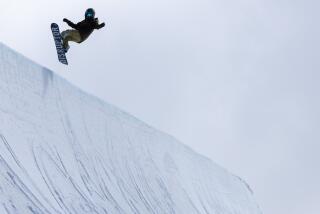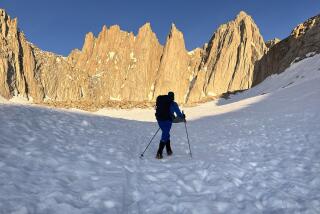Planning your sledding trip to Big Bear
- Share via
What could possibly go wrong during a fun day of sledding? Plenty, according to a recent study by the U.S. Consumer Product Safety Commission, which recorded more than 15,000 emergency room-treated sledding injuries in 2006. Here’s how to reduce the stats.
Don’t skimp on your sled: Structurally sound models with runners and built-in steering mechanisms are far safer than snow disks, plastic sheets or spare shopping bags.
Dress for the occasion: Stay warm by layering, keep dry with waterproof clothing and use ski-type helmets and eye protection.
Pick the right spot: The most common sledding injuries at Big Bear, says U.S. Forest Service officer Paul Bennett, are caused by collisions with fixed objects, such as trees. Choose an obstacle- and crowd-free
slope that does not exceed a 30-degree grade with a flat runoff that doesn’t end on the street.
Sit up: With your feet in front. Never sled head first.
Stay with your kids: Sledders who aren’t strong or coordinated enough to control their own sled should be accompanied by an adult.
More to Read
Sign up for The Wild
We’ll help you find the best places to hike, bike and run, as well as the perfect silent spots for meditation and yoga.
You may occasionally receive promotional content from the Los Angeles Times.






